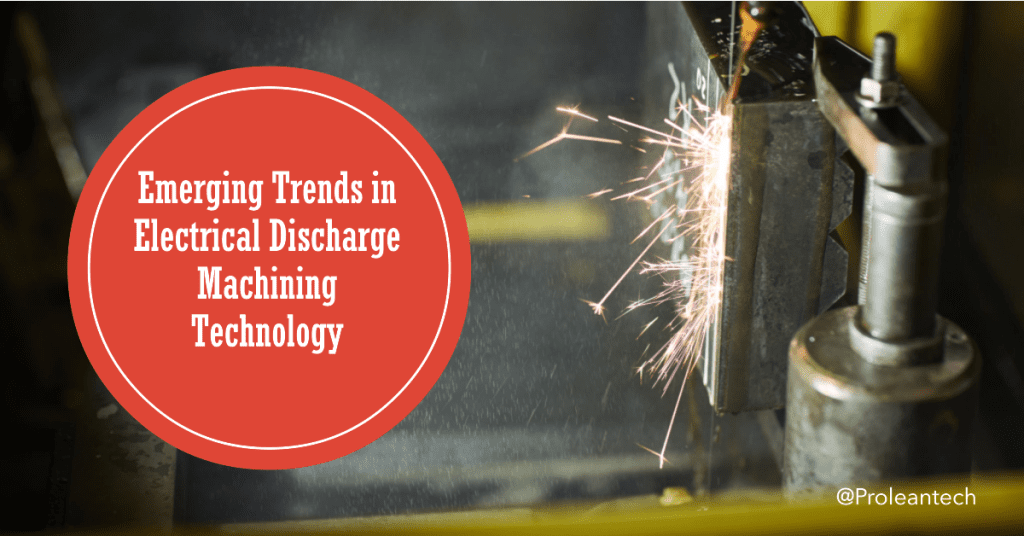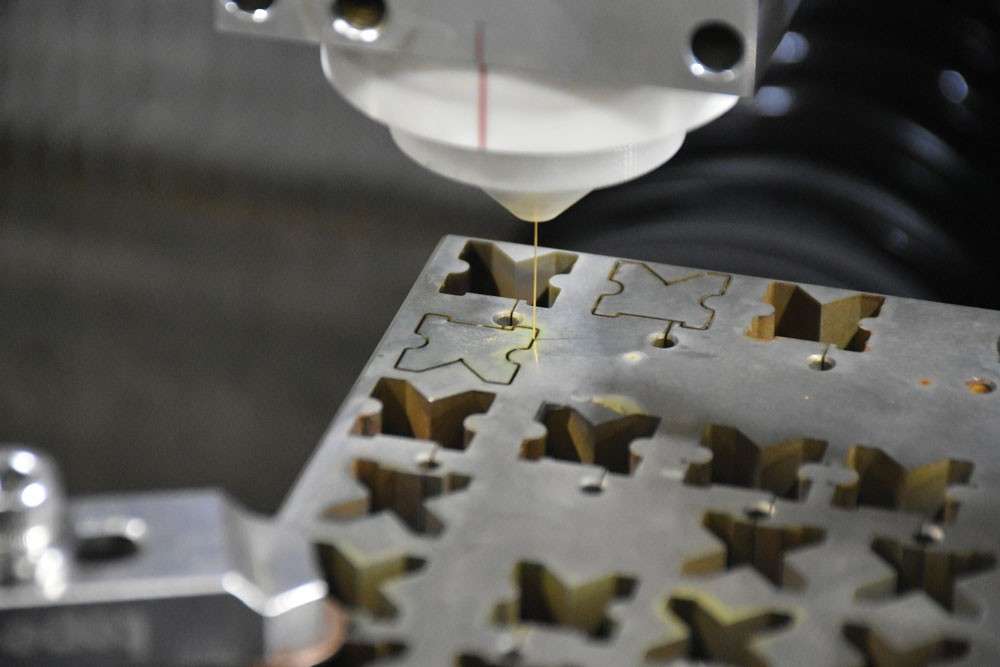The field of precision machining is constantly evolving, driven by advancements in technology and the pursuit of greater efficiency and accuracy. One such technology that has played a pivotal role in precision machining is Electrical Discharge Machining (EDM). EDM has witnessed significant developments over the years, leading to improved capabilities and expanded applications.
In this article, we will delve into the emerging trends in EDM technology and their impact on the future of precision machining
Advanced EDM Machine Designs
EDM machine designs have evolved significantly over the years, incorporating advanced technologies and features to enhance performance, productivity, and versatility. The following subheadings explore some of the notable advancements in EDM machine designs:
1. Multitasking EDM Machines
Multitasking EDM machines have revolutionized the field of precision machining by integrating multiple machining processes into a single platform. These machines offer the capability to perform EDM operations along with additional functions such as milling, turning, and grinding. Here are some key benefits and features of multitasking EDM machines:
- Improved Efficiency: Multitasking EDM machines eliminate the need for separate setups and multiple machines, reducing overall cycle times and increasing productivity.
- Enhanced Precision: With integrated EDM capabilities, these machines maintain high levels of precision and accuracy in the EDM process, ensuring consistent results.
- Versatility: The ability to perform various machining operations on a single machine enhances the versatility of multitasking EDM machines, allowing for greater flexibility in manufacturing processes.
- Streamlined Workflow: By combining multiple processes, multitasking machines streamline workflow, reduce material handling, and improve overall efficiency.
2. Hybrid EDM Technologies
Hybrid EDM technologies combine EDM with other machining processes, such as laser machining or milling, to create a synergistic approach to precision machining. These hybrid systems leverage the strengths of both EDM and other methods to overcome limitations and achieve superior results. Here are some notable features and advantages of hybrid EDM technologies:
- Enhanced Surface Finish: By integrating EDM with processes like laser machining or milling, hybrid EDM technologies can achieve exceptional surface finish quality, even on challenging materials.
- Reduced Machining Time: The combination of EDM with other machining techniques allows for faster material removal rates, leading to reduced machining time and increased productivity.
- Expanded Machining Capabilities: Hybrid EDM technologies enable the machining of complex geometries, intricate details, and hard-to-reach areas, extending the range of possible applications.
- Flexibility and Customization: With the ability to switch between different machining methods, hybrid EDM machines offer flexibility and customization options to adapt to specific machining requirements.
Advanced EDM Techniques
EDM techniques have undergone significant advancements to improve machining efficiency, precision, and surface quality. The following subheadings explore some of the notable advanced EDM techniques:
1. Wire EDM with Automatic Wire Threading
Wire EDM, also known as wire-cut EDM or WEDM, is a widely used technique in precision machining. The introduction of automatic wire threading has further enhanced the capabilities of this process. Here are some key features and advantages of wire EDM with automatic wire threading:
| Features | Advantages |
|---|---|
| Seamless Operation | Automatic wire threading eliminates the need for manual intervention in the threading process, ensuring uninterrupted operation and reducing downtime. |
| Improved Accuracy | The automatic threading mechanism ensures precise and consistent wire positioning, resulting in improved cutting accuracy and part quality. |
| Complex Part Machining | Wire EDM with automatic wire threading allows for the machining of intricate and complex parts with high precision and fine details. |
| Time and Cost Savings | The automated wire threading feature reduces setup time and increases productivity, resulting in overall time and cost savings |
2. Sinker EDM with Adaptive Control
Sinker EDM, also known as die sinking or conventional EDM, is widely used for producing molds, dies, and complex shapes. The incorporation of adaptive control in sinker EDM has revolutionized the process. Here are some notable features and benefits of sinker EDM with adaptive control:
| Features | Advantages |
|---|---|
| Real-Time Feedback | Adaptive control systems continuously monitor and adjust various machining parameters in real time based on feedback from sensors, resulting in improved machining accuracy and surface finish. |
| Increased Efficiency | Adaptive control optimizes machining conditions, such as discharge energy, electrode wear, and flushing, leading to faster material removal rates and improved efficiency. |
| Reduced Electrode Wear | The ability of adaptive control systems to adjust machining parameters based on electrode wear helps prolong electrode life, reducing production costs and tooling expenses. |
| Enhanced Surface Quality | By dynamically adapting the EDM process parameters, sinker EDM with adaptive control achieves a superior surface finish and eliminates defects such as pitting and recast layer. |
Advancements in EDM Control Systems
EDM control systems play a crucial role in ensuring precise and efficient machining operations. Recent advancements in EDM control systems have introduced intelligent features and capabilities. The following subheadings highlight some of these advancements:
1. Adaptive Control Systems
Adaptive control systems in EDM allow for real-time monitoring and adjustment of machining parameters based on sensor feedback. These systems continuously analyze the machining conditions and dynamically optimize the process parameters, resulting in improved accuracy, efficiency, and surface finish.
2. Intelligent Electrode Wear Compensation
Electrode wear is a natural occurrence in EDM, which can affect machining accuracy and surface finish. Intelligent electrode wear compensation systems utilize sensors and algorithms to measure and compensate for electrode wear during the machining process. This ensures consistent accuracy and prolongs the life of the electrode, reducing production costs.
3. Predictive Maintenance
Predictive maintenance systems utilize data analytics and machine learning algorithms to predict and prevent equipment failures. In the context of EDM, these systems monitor various parameters such as power consumption, vibration, and temperature to identify potential issues and schedule maintenance tasks proactively. This helps minimize unplanned downtime, optimize machine performance, and extend the lifespan of EDM equipment.
4. Integration of IoT and Connectivity
The integration of Internet of Things (IoT) technology and connectivity features allows EDM machines to be connected to a network, enabling remote monitoring, data collection, and control. This connectivity facilitates real-time performance tracking, data analysis, and optimization of machining processes. It also enables seamless integration with other manufacturing systems, enhancing overall efficiency and productivity.
Environmental Considerations in EDM
EDM (Electrical Discharge Machining) is a highly efficient and precise machining process widely used in various industries. However, like any industrial process, EDM has environmental implications that need to be considered. This section explores the environmental considerations associated with EDM and highlights the measures that can be taken to mitigate its impact.
Energy Consumption
EDM machines typically consume significant amounts of electrical power during operation. The energy consumption primarily occurs during the discharge phase when electrical energy is converted into thermal energy to erode the workpiece material. It is essential to optimize energy usage to minimize the environmental impact of EDM. Some key considerations in energy consumption include:
- Machine Efficiency: Utilizing modern EDM machines that are designed with energy-efficient features and technologies can help reduce energy consumption.
- Process Optimization: Implementing process optimization techniques such as optimizing machining parameters, reducing machining time, and optimizing tool paths can lead to energy savings.
- Power Management: Implementing power management strategies such as powering down machines when not in use and optimizing power distribution can contribute to energy conservation.
Waste Generation and Disposal
EDM generates waste in the form of sludge and debris. The dielectric fluid used in the process can become contaminated with metal particles, which necessitates proper waste management practices. Here are some considerations to mitigate waste generation and disposal:
- Filtration Systems: Installing effective filtration systems in EDM machines can remove particles and contaminants from the dielectric fluid, extending its useful life and reducing waste generation.
- Recycling and Reclamation: Implementing recycling and reclamation programs for the dielectric fluid and metal waste can minimize environmental impact.
- Proper Disposal: Ensuring proper disposal of waste materials according to local regulations and guidelines is crucial to prevent environmental contamination.
Emissions and Air Quality
During the EDM process, gases and fumes can be released, potentially affecting air quality. It is important to address emissions and implement measures to maintain good air quality. Some considerations include:
- Ventilation Systems: Implementing efficient ventilation systems in the EDM facility can help capture and remove emissions, preventing their release into the surrounding environment.
- Emission Control Technologies: Using emission control technologies such as exhaust filters and air scrubbers can help remove pollutants from the air, improving air quality.
- Dielectric Fluid Management: Proper management of dielectric fluids, including regular maintenance, filtration, and control of vaporization, can help minimize emissions.
Conclusion
The future of precision machining is being shaped by the emerging trends in EDM technology. Advanced machine designs, novel techniques, improved control systems, enhanced performance, and environmental considerations are driving the evolution of EDM. These trends offer greater flexibility, precision, and efficiency in the machining process, opening doors to new applications and pushing the boundaries of what is possible in precision manufacturing.
When it comes to EDM machining, Prolean is a trusted provider of high-quality precision machining solutions. With advanced EDM technology and a team of skilled professionals, Prolean offers accurate and efficient EDM services to meet the diverse needs of industries. Contact us today to learn more about how Prolean can support your EDM machining requirements.
FAQ’s
How do advanced EDM techniques like micro-EDM benefit industries?
Micro-EDM enables the production of intricate and miniaturized components with high precision, making it valuable in industries such as medical devices, electronics, and aerospace. It allows for the fabrication of micro-sized features that are critical in these applications.
How does AI integration in EDM control systems improve machining performance?
AI integration in EDM control systems enables real-time data analysis, optimization of machining parameters, prediction of tool wear, and detection of anomalies. This leads to improved efficiency, reduced downtime, and enhanced overall performance by adapting the machining process to changing conditions.
What are the environmental benefits of green EDM technologies?
Green EDM technologies focus on reducing energy consumption, minimizing waste generation, and optimizing resource utilization. This contributes to a more sustainable approach to EDM, resulting in a reduced environmental impact and improved resource efficiency.
What are some of the challenges in implementing hybrid EDM technologies?
Hybrid EDM technologies are complex to integrate due to multiple machining processes. Expertise in different areas of machining and a deep understanding of materials and applications are needed. Manufacturers need to evaluate the benefits and ROI carefully due to the high cost of implementation.







0 Comments